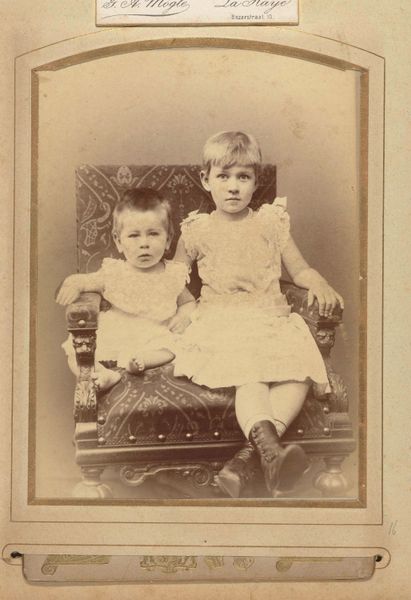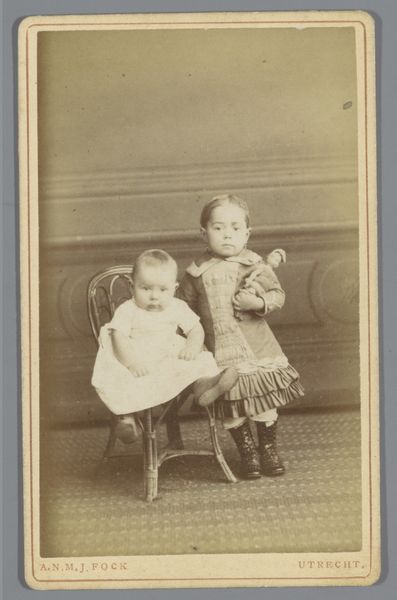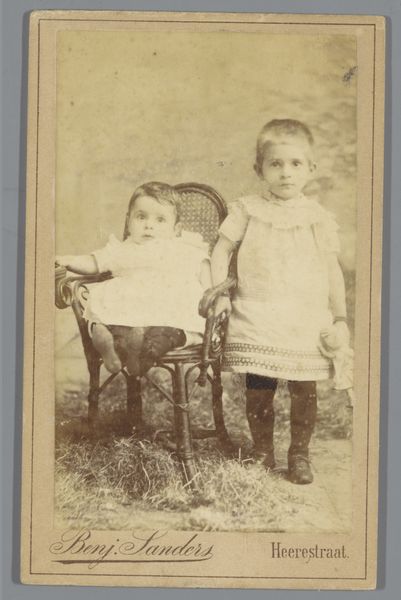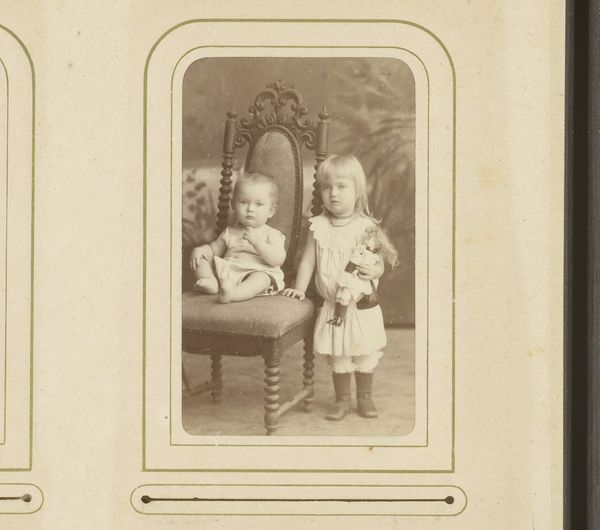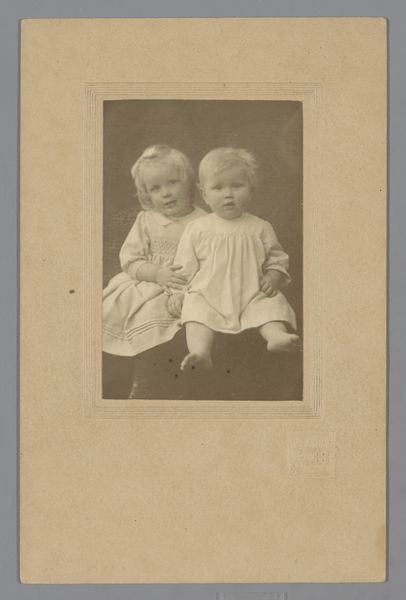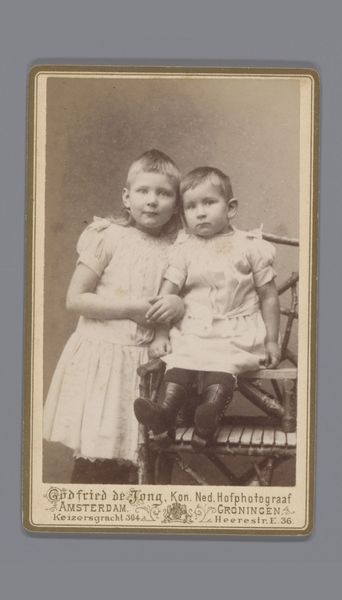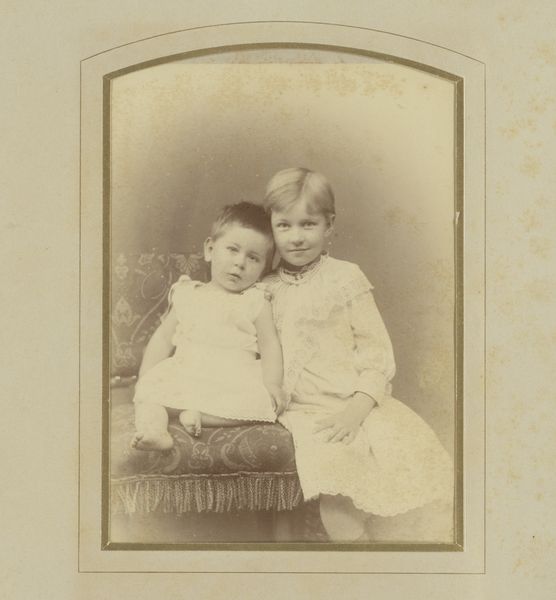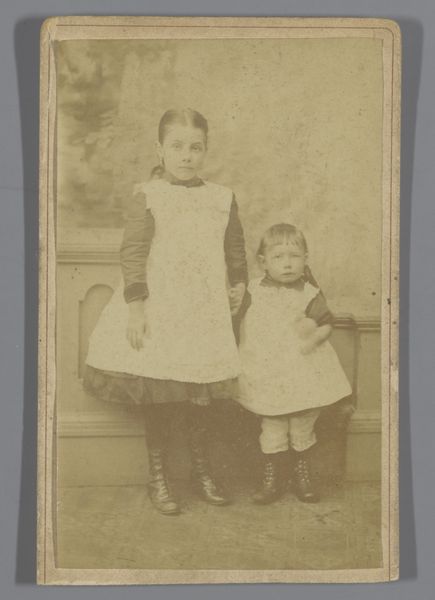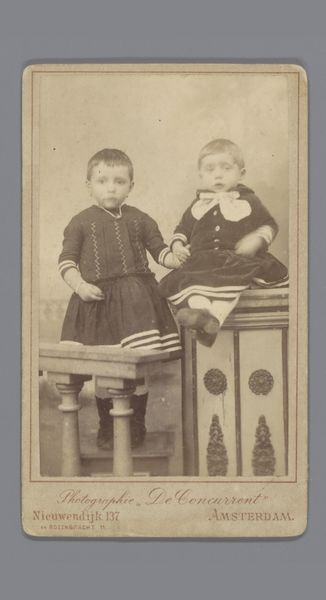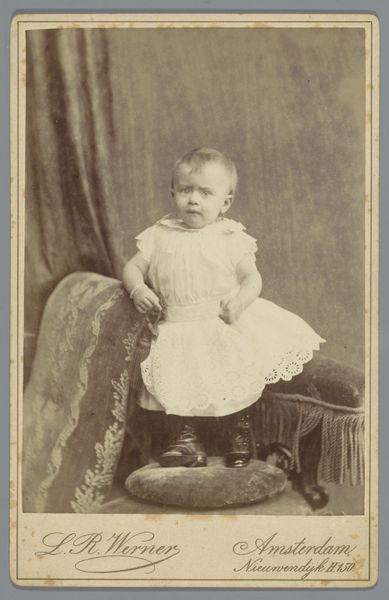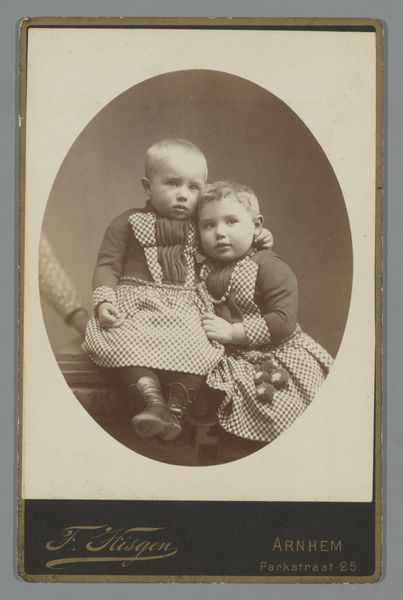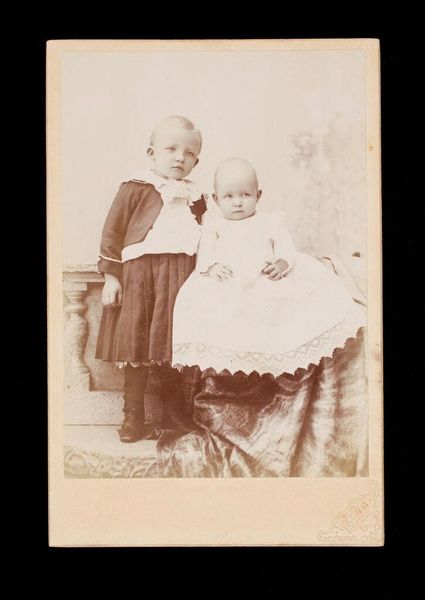
photography
#
16_19th-century
#
photography
#
child
#
19th century
#
genre-painting
Dimensions: height 142 mm, width 103 mm
Copyright: Rijks Museum: Open Domain
Editor: This is "Portrait of an Unknown Girl and a Baby on a Chair" from 1889, by Augustin Aimé Joseph Lejeune. It's a photograph, a genre scene, but there is an underlying sense of melancholy here. What are your thoughts when you see this piece? Curator: The image vibrates with unspoken narratives around gender roles and expectations. In 1889, what did it signify for a young girl to be tasked with the care of a baby? The composition almost certainly signifies a narrative; the way she carefully positions her hand suggests both affection, duty and restraint. The staged formality hints at the socio-economic pressures shaping childhood during this era. What do you make of their clothing? Editor: It’s quite detailed. Their dresses are starched and pressed, although they appear plain and lack any vibrant colours. It hints at some sort of middle-class upbringing? Curator: Exactly. Beyond class, think about the cultural significance of 'performing' domesticity in late 19th century photography. Images like these solidified ideals around femininity and motherhood, subtly reinforcing the boundaries of acceptable female roles. How do you view the composition, knowing it was photographed in a studio? Editor: I hadn't considered it as 'performing' at first; I just thought it was posed, but this formality reinforces the cultural ideas. It suggests more than just documenting a moment; it aims to showcase it according to a defined ideal, which you describe as domesticity? Curator: Precisely! The girl’s positioning in front of an embellished studio wall also emphasizes a social performance of being, which underscores the expectations of girls as representatives of class and social standards at the time. What assumptions were made about her, the girl’s identity and worth within that domestic sphere, that may perpetuate inequality in unseen forms today? Editor: Viewing it through that lens makes it far more impactful. Thanks. Curator: Yes, considering the social contexts enriches our understanding of not only the piece, but of its time and ours too.
Comments
No comments
Be the first to comment and join the conversation on the ultimate creative platform.

